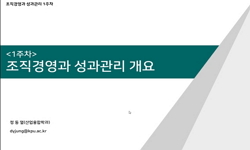PURPOSES: This study intends to develop an inorganic soil pavement material using industrial by-products and to evaluate its applicability as a road pavement material. METHODS: In this study, a compressive strength experiment was conducted based on ...
http://chineseinput.net/에서 pinyin(병음)방식으로 중국어를 변환할 수 있습니다.
변환된 중국어를 복사하여 사용하시면 됩니다.
- 中文 을 입력하시려면 zhongwen을 입력하시고 space를누르시면됩니다.
- 北京 을 입력하시려면 beijing을 입력하시고 space를 누르시면 됩니다.
https://www.riss.kr/link?id=A101736607
- 저자
- 발행기관
- 학술지명
- 권호사항
-
발행연도
2015
-
작성언어
Korean
- 주제어
-
등재정보
KCI등재
-
자료형태
학술저널
- 발행기관 URL
-
수록면
19-26(8쪽)
- 제공처
-
0
상세조회 -
0
다운로드
부가정보
다국어 초록 (Multilingual Abstract)
METHODS: In this study, a compressive strength experiment was conducted based on the NaOH solution molarity and water glass content to understand the strength properties of the soil pavement material according to the mixing ratio of alkali activator. In addition, the strength characteristic of the inorganic soil pavement material was analyzed based on the binder content. The performance of the soil pavement was evaluated by conducing an accelerated pavement test and a falling weight deflectometer (FWD) test.
RESULTS: As a result of the soil pavement material test based on the mixture ratio of alkali activator, it was identified that the activator that mixed a 10 M NaOH solution to water glass in a 5:5 ratio is appropriate. As a result of the inorganic soil pavement materials test based on the binder content, the strength development increased sharply when the amount of added binder was over 300 kg; this level of binder content satisfied 28 days of 18 MPa of compression strength, which is the standard for existing soil pavement design. According to the measured results of the FWD test, the dynamic k-value did not show a significant difference before or after the accelerated pavement testing. Furthermore, the effective modulus decreased by approximately 50%, compared with the initial effective modulus for pedestrian pavement.
CONCLUSIONS: Based on these results, inorganic soil pavement can be applied by changing the mixture proportions according to the use of the pavement, and can be utilized as road pavement from light load roads to access roads.
PURPOSES: This study intends to develop an inorganic soil pavement material using industrial by-products and to evaluate its applicability as a road pavement material.
METHODS: In this study, a compressive strength experiment was conducted based on the NaOH solution molarity and water glass content to understand the strength properties of the soil pavement material according to the mixing ratio of alkali activator. In addition, the strength characteristic of the inorganic soil pavement material was analyzed based on the binder content. The performance of the soil pavement was evaluated by conducing an accelerated pavement test and a falling weight deflectometer (FWD) test.
RESULTS: As a result of the soil pavement material test based on the mixture ratio of alkali activator, it was identified that the activator that mixed a 10 M NaOH solution to water glass in a 5:5 ratio is appropriate. As a result of the inorganic soil pavement materials test based on the binder content, the strength development increased sharply when the amount of added binder was over 300 kg; this level of binder content satisfied 28 days of 18 MPa of compression strength, which is the standard for existing soil pavement design. According to the measured results of the FWD test, the dynamic k-value did not show a significant difference before or after the accelerated pavement testing. Furthermore, the effective modulus decreased by approximately 50%, compared with the initial effective modulus for pedestrian pavement.
CONCLUSIONS: Based on these results, inorganic soil pavement can be applied by changing the mixture proportions according to the use of the pavement, and can be utilized as road pavement from light load roads to access roads.
목차 (Table of Contents)
- 1. 서론
- 2. 실내실험
- 3. 포장가속시험을 통한 성능 분석
- 4. 결론
- 감사의 글
- 1. 서론
- 2. 실내실험
- 3. 포장가속시험을 통한 성능 분석
- 4. 결론
- 감사의 글
- REFERENCES
동일학술지(권/호) 다른 논문
-
지표투과레이더와 적외선카메라를 이용한 아스팔트 포장 시공 관리 방법
- 한국도로학회
- 백종은,박희문,유평준,임재규
- 2015
- KCI등재
-
능동형 소음저감 기법을 위한 도로교통소음 예측 모형 평가 연구
- 한국도로학회
- 안덕순,문성호,안오성,김도완
- 2015
- KCI등재
-
터널천단변위와 암석 또는 암반의 일축압축강도를 이용한 시공 중인 터널의 예비 안정성 평가
- 한국도로학회
- 박영화,문홍득,하만복
- 2015
- KCI등재
-
- 한국도로학회
- 김용석,이석기
- 2015
- KCI등재





 코리아스칼라
코리아스칼라




